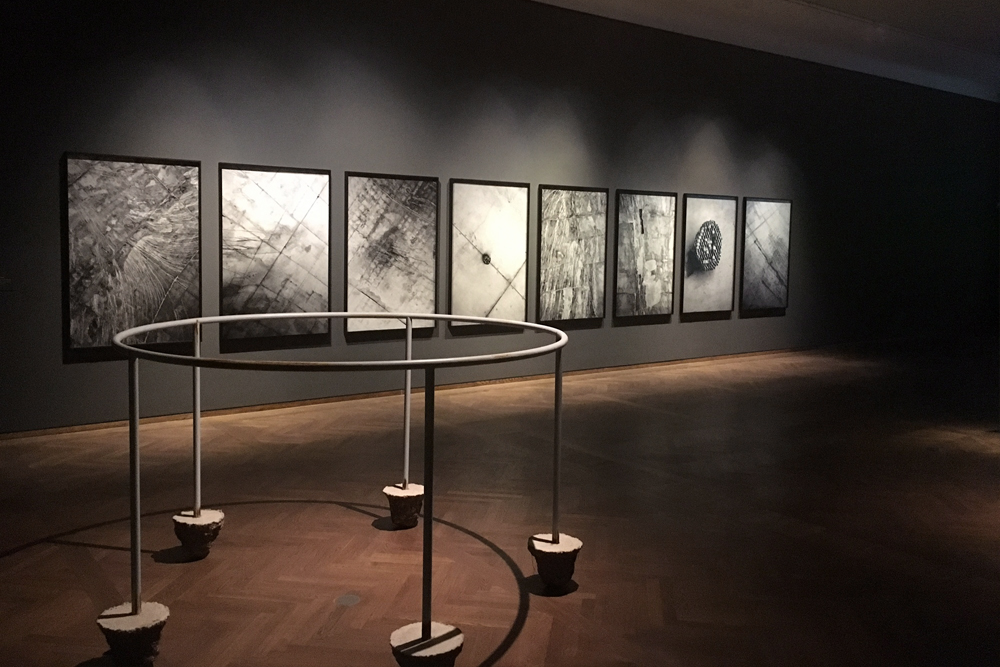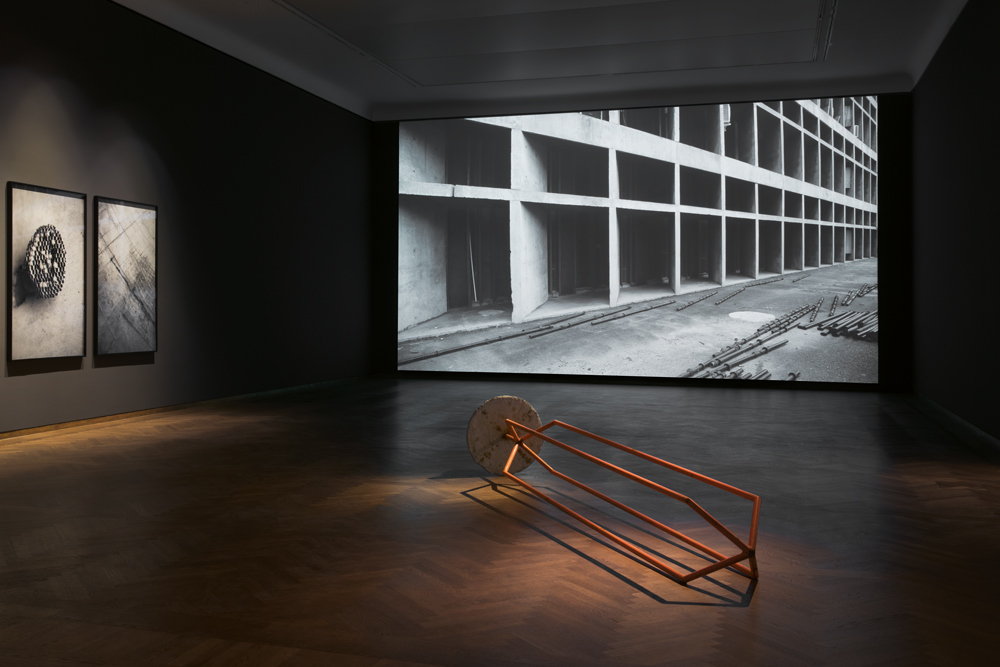


TRACES OF TIME
Leopold Museum, Vienna (AT)
20.10.2017 – 26.02.2018
Curator:
Stephanie Damianitsch (AT)
Artists:
Mladen Bizumic (NZ), Cäcilia Brown (FR), Andreas Fogarasi (AT), Sofie Thorsen (DK), Kay Walkowiak (AT), Anita Witek (AT)
The exhibition Traces of Time focuses on contemporary artistic strategies dedicated to exploring and questioning visual culture. Their emphasis is on the construction of visual aspects in art, photography and architecture, as well as in everyday objects. The research-based approach of these artists, who draw on historical documents and visual forms, revolves around the question of how historical documents show something rather than on what they show, and which functions are linked to this in the discourse of knowledge. Thus, their works can be regarded as a type of documentary practice. The featured works show that rather than merely establishing facts, documentation is now characterized by an open-mindedness that focuses on the construction of perception and culture.
Kay Walkowiak shows with his works that visual culture always has a history, one that reveals itself above all in its contrast to the present day or in a different cultural environment. His works take as their theme formal languages found in the cultural picture archive - particularly from the sphere of a Western cultural history of abstraction - which he finds in or transfers to everyday situations or different cultural contexts. He thereby exposes divergent concepts of time and space and calls into question the cultural character of perception in itself. The artist deciphers abstract forms not so much as universally valid, timeless materializations of ideas but rather as projection surfaces of narratives of Western cultural history and the utopias associated with them. The utopias that Walkowiak examines in his works have been given an architectural form in, for example, the planned city of Chandigarh, in northern India, built in the 1950s to plans by the Swiss-born architect Le Corbusier. At the time of its construction, this type of urban concept - based on elementary geometric forms, characterized by steel and concrete and guided by the principle of functionality - was regarded as symbolic of India's striving for modernity. In its succession of black-and-white, unpeopled shots of Chandigarh, now showing signs of deterioration, the 2017 The City Lost acts as an archive of the city's architectural forms and formal compositions. This visual archive is overlaid with an audio track that borrows from the sound plane of science fiction films such as Blade Runner and 2001: A Space Odyssey. But the audio plane only seemingly lifts Chandigarh's architectural formations into an uncertain future. Rather, the city is contrasted with culturally-shaped future visions familiar from the genre of the science fiction film. The densification of spatial images is not only deliberately elevated to the level of the historic imaginary but also introduced into a montage of temporalities. With this, Walkowiak succeeds in evoking the memory of an idea of the future that has now itself become the past. In this way the artist explores utopian aspirations historically associated with Chandigarh and at the same time gives the city the character of a dystopia. A comparable dialectic between factual stocktaking and fictitious transformation that draws on the fund of the historic imaginary also characterizes the sculptures he has created in recent years, such as Future Fragments of Past Forms, and the 2016 video work Waterfall. Like The City Lost, they reveal the artist's fundamental search for the spirits of the past in the visual forms of the present.
What all of the artists presented in this exhibition have in common is that they no longer perceive reality as a natural state. At the core of their works is always the reflection on both historic and current social processes and ideologies that are in principle invisible, but - like "specters" attain a visual presence in the field of the visible. Through the artists' investigation and documentation of these phenomena and the forms of their representation through their works, they also succeed in disturbing the regime of visibilities.
Text: Stephanie Damianitsch, Leopold Museum, Vienna 2017
Photos: (c) Leopold Museum / Lisa Rastl
Kay Walkowiak shows with his works that visual culture always has a history, one that reveals itself above all in its contrast to the present day or in a different cultural environment. His works take as their theme formal languages found in the cultural picture archive - particularly from the sphere of a Western cultural history of abstraction - which he finds in or transfers to everyday situations or different cultural contexts. He thereby exposes divergent concepts of time and space and calls into question the cultural character of perception in itself. The artist deciphers abstract forms not so much as universally valid, timeless materializations of ideas but rather as projection surfaces of narratives of Western cultural history and the utopias associated with them. The utopias that Walkowiak examines in his works have been given an architectural form in, for example, the planned city of Chandigarh, in northern India, built in the 1950s to plans by the Swiss-born architect Le Corbusier. At the time of its construction, this type of urban concept - based on elementary geometric forms, characterized by steel and concrete and guided by the principle of functionality - was regarded as symbolic of India's striving for modernity. In its succession of black-and-white, unpeopled shots of Chandigarh, now showing signs of deterioration, the 2017 The City Lost acts as an archive of the city's architectural forms and formal compositions. This visual archive is overlaid with an audio track that borrows from the sound plane of science fiction films such as Blade Runner and 2001: A Space Odyssey. But the audio plane only seemingly lifts Chandigarh's architectural formations into an uncertain future. Rather, the city is contrasted with culturally-shaped future visions familiar from the genre of the science fiction film. The densification of spatial images is not only deliberately elevated to the level of the historic imaginary but also introduced into a montage of temporalities. With this, Walkowiak succeeds in evoking the memory of an idea of the future that has now itself become the past. In this way the artist explores utopian aspirations historically associated with Chandigarh and at the same time gives the city the character of a dystopia. A comparable dialectic between factual stocktaking and fictitious transformation that draws on the fund of the historic imaginary also characterizes the sculptures he has created in recent years, such as Future Fragments of Past Forms, and the 2016 video work Waterfall. Like The City Lost, they reveal the artist's fundamental search for the spirits of the past in the visual forms of the present.
What all of the artists presented in this exhibition have in common is that they no longer perceive reality as a natural state. At the core of their works is always the reflection on both historic and current social processes and ideologies that are in principle invisible, but - like "specters" attain a visual presence in the field of the visible. Through the artists' investigation and documentation of these phenomena and the forms of their representation through their works, they also succeed in disturbing the regime of visibilities.
Text: Stephanie Damianitsch, Leopold Museum, Vienna 2017
Photos: (c) Leopold Museum / Lisa Rastl
︎ Archive Exhibitions